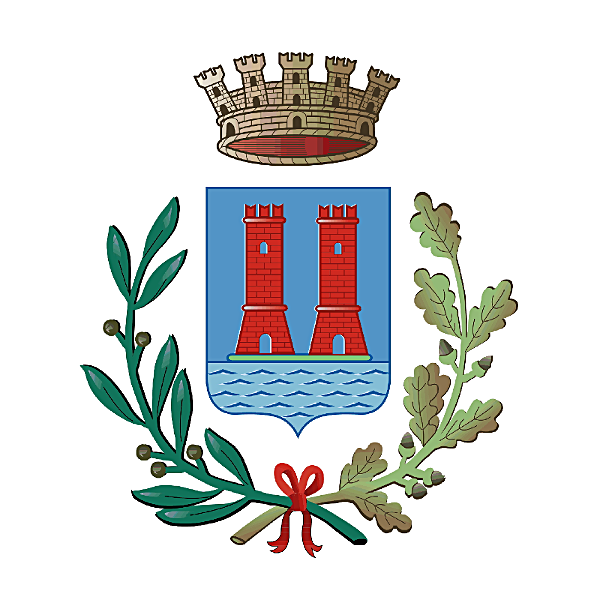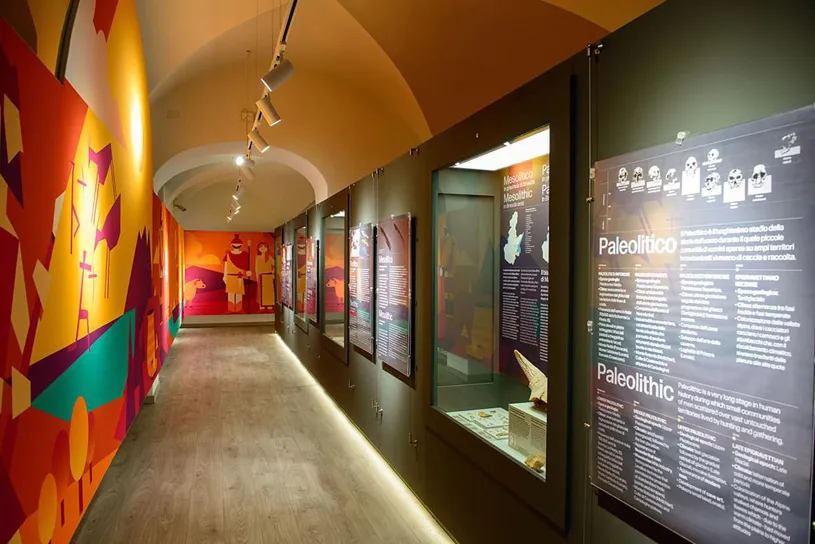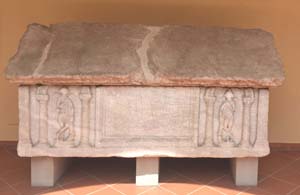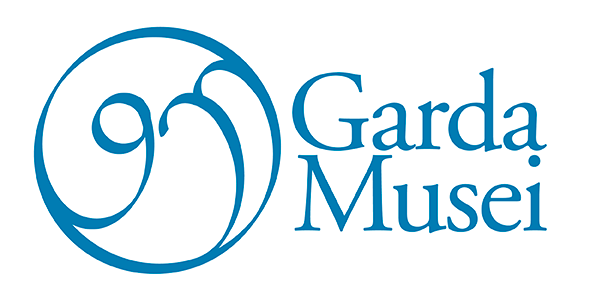Ground floor museum exhibitionDesenzano and its territory: the ground floor offers a chronological-didactic itinerary through the history of human presence in the Desenzano area from the Palaeolithic to the early Middle Ages. The materials on display come both from the first private collections that constituted the original nucleus of the museum's holdings and from the surface collections of archaeological groups operating in the area, as well as from the various archaeological excavations that have affected and continue to affect the territory.
Territory roomThe history of the area flows on the walls thanks to the illustrations by Francesco Poroli and is narrated in the showcases displaying archaeological finds, from the Palaeolithic to the Roman and Late Antique periods.
The exhibition opens with a section dedicated to the history of research in the area and collecting. The museum preserves materials from the collection of the lawyer Emilio Mosconi (1897-1983), collected at the Lavagnone pile dwelling (Desenzano del Garda-Lonato). On his death, his son handed over the collection to the State so that it could be exhibited in Desenzano Museum “to allow citizens to see and study it”, at his father’s request. On the first floor of the museum is a wooden harvest knife with flint blades.Two showcases are dedicated to the important site of Ponte San Marco (Calcinato - BS), active at the end of the Bronze Age and a crossing point on the route that led from the Po Plain to the territories of Trentino.
The exhibition continues with an area dedicated to Desenzano in Roman times.
The sarcophagus of Atilia Urbica
On display in the cloister is a sarcophagus from the 2nd-3rd century AD dedicated to Atilia Urbica, confirming the presence of important Roman families in the area.
Also in the cloister is a bas-relief depicting a Venetian lion, dating back to the period of the Venetian Republic's rule over Desenzano (from 1426 to the end of the 18th century) and one of the original columns that adorned the cloister itself.








